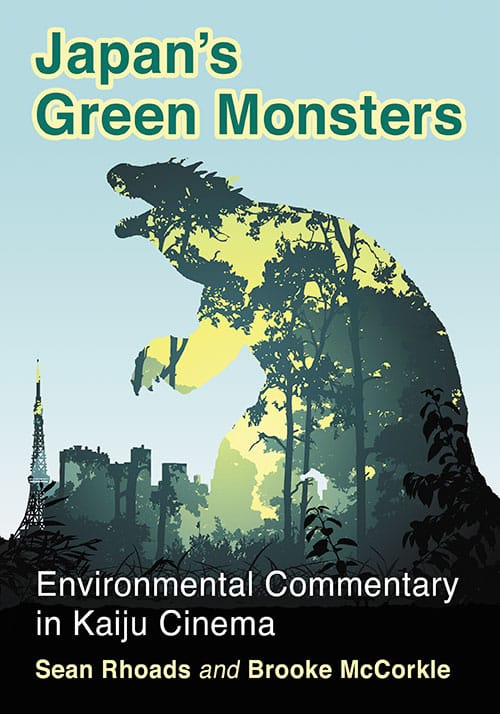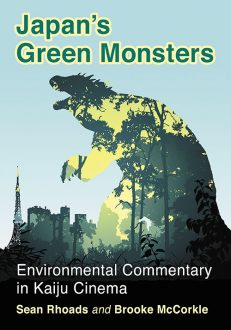Japan’s Green Monsters
Environmental Commentary in Kaiju Cinema
$29.95
In stock
About the Book
In 1954, a massive irradiated dinosaur emerged from Tokyo Bay and rained death and destruction on the Japanese capital. Since then Godzilla and other monsters, such as Mothra and Gamera, have gained cult status around the world.
This book provides a new interpretation of these monsters, or kaiju-ū, and their respective movies. Analyzing Japanese history, society and film, the authors show the ways in which this monster cinema take on environmental and ecological issues—from nuclear power and industrial pollution to biodiversity and climate change.
About the Author(s)
Bibliographic Details
Sean Rhoads and Brooke McCorkle
Format: softcover (7 x 10)
Pages: 226
Bibliographic Info: 11 photos, notes, bibliography, index
Copyright Date: 2018
pISBN: 978-1-4766-6390-6
eISBN: 978-1-4766-3134-9
Imprint: McFarland
Table of Contents
Preface 1
1. Japanese Giant Monster Movies 5
2. Nuclear Terror and Radioactive Landscapes 19
3. Godzilla, Nature and Nuclear Revenge 34
4. Mothra, Marx, Mother Nature 50
5. The Decline of Cinema and Rise of Monsters 71
6. Daikaijū Gamera: Consuming Natural Resources 87
7. 1970s Japan: “A polluter’s paradise” 101
8. Smog, Sludge and Hippies: Godzilla vs. Hedorah 112
9. Gamera vs. Zigra: A Tale of Space Invaders and the Sea 127
10. The Bubble and the Beasts: Kaijū eiga of the 1980s 138
11. Rebirth of Mothra: Daikaijū and the Environment in the Post-Bubble Era 156
12. Prevailing Concerns in the New Millennium 173
Chapter Notes 185
Bibliography 205
Index 213
Book Reviews & Awards
• “An interesting study of both film and psychology…a must read”— Against the Grain
• “Rhoads and McCorkle’s study is a valuable contribution to Godzilla studies, kaiju eiga, and ecocriticism. Their work should be considered alongside that of William Tsutsui, Chon Noriega, and Yoshikuni lgarashi as necessities for serious scholarship of Godzilla. The strength of this study is the way in which it considers all of the Godzilla, Mothra, and Gamera movies as parts of a continuum larger and more complex than its individual components and as examples of a genre that has been undervalued for far too long.”—SFRA Review
• “Rhoads and McCorkle also do an excellent job drawing connections between the scores of these films and their environmental commentary. …a useful volume for readers interested in the political potential of popular cinema. …Because Japan’s Green monsters successfully demonstrates that kaijū cinema provides a place for important conversations regarding rapid environmental changes and existential threats, undergraduate and graduate students, university faculty, and members of the general public interested in the intersections of film studies, music studies, visual studies, cultural studies, and environmental studies will benefit from this book.”—Journal of Popular Film and Television
• “Detailed, scholarly and well-written…well worth reading and re-reading…Definitely recommended”—G-Fan
• “A meticulously documented work of seminal scholarship that is unreservedly recommended for community, college, and university collections”—Midwest Book Review





